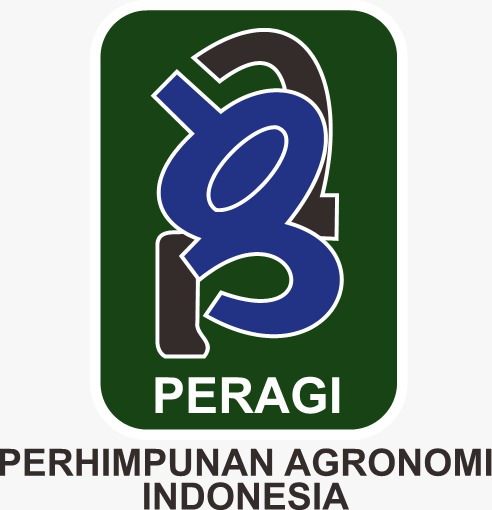Optimizing the Growth and Production of Shallots (Allium ascalonicum L) by applying Liquid Organic Fertilizer from Kampar River Fish Waste on Ultisol Soil
Abstract
Red onion is a strategic commodity because it is one of the horticultural products required for household consumption, the culinary industry, and medicinal purposes. The Kampar Regency is known for producing river fish, which the residents of Kampar and Pekanbaru consume. If this refuse is not correctly managed, it can pollute the environment. This refuse can be converted into liquid organic fertilizer (POC) due to its ability to improve soil fertility and shallot plant growth. This study aimed to determine the effect of interaction and the primary optimization of the growth and yield of shallots on ultisol soil by administering POC derived from the fish refuse of the Kampar River. The investigation was conducted in the experimental garden of the Riau Islamic University, Pekanbaru, Faculty of Agriculture. The research employed a wholly random design with two factors. The first factor consisted of four levels of concentration of river fish waste (0, 22,5, 45, 67.5, and 90 ml-1) and the second factor consisted of four levels of frequency of river fish waste (1, 2, 3, 4 times). The data were analyzed and the BNJ Advanced Test was administered at a 5% confidence level. The results indicated that the interaction and main effects were significant for plant height, number of leaves, age of tuber formation, number of tubers, wet tuber weight and dried tuber weight, with the optimal treatment consisting of 67.5 – 90 ml-1 applied three to four times.
Downloads
References
Badan Pusat Statistik Riau. 2017. Statistik Pertanian Riau. diakses tanggal 22 Desember 2022.
____ 2022. Badan Pusat Statistik. BPS. https://www.bps.go.id/indicator/55/61/1/produksi- tanaman-sayuran.html. diakses tanggal 22 Desember 2022.
Carora, A. F, Wicaksono, K.P dan Heddy, S. 2014. The Effect of Application Bioactivator on the Growth and Yield of Shallot (Allium ascolanium L.). Jurnal Produksi Tanaman, Vol. 2 No. 5: 434 – 442.
Hapsari, N. dan Welasih, T. 2011. Pemanfaatan Limbah Ikan menjadi Pupuk Organik. Jurnal Ilmiah Teknik Lingkungan, Vol. 3 No. 1: 1 – 6.
Hardiansyah, R. 2020. Respon Pertumbuhan dan Produksi Tanaman Bawang Merah Varietas Brebes (Allium cepa L) Terhadap Pemberian POC Limbah Ikan dan Boskahi Kotoran Sapi. Skripsi Fakultas Pertanian. Universitas Muhammadiyah Sumatera Utara. Medan.
Lakitan, B. l996. Fisiologi Pertumbuhan dan Perkembangan Tanaman. PT Raja Grafindo Persada, Jakarta.
Mukhlis, P. dan D. Anggorowati.2011. Pengaruh berbagai jenis mikroorganisme lokal (MOL) terhadap pertumbuhan dan hasil bawang merah pada tanah aluvial. Jurnal Sains Pertanian Equator Vol. 1 No. 1: 1 – 5.
Mutryarny, E., Endriani, Lestari, S.U,. 2014. Pemanfaatan Urine Kelinci untuk Meningkatkan Pertumbuhan dan Produksi Tanaman Sawi (Brassica juncea L) Varietas Tosakan. Jurnal Ilmiah Pertanian. Vol. 11 No. 2: 23 – 34.
Nizar, M., 2011. Pengaruh Beberapa Jenis Bahan Organik Terhadap Pertumbuhan Dan Hasil Padi Dengan Metode SRI. Diakses dari (http://faperta.unand.ac.id/solum/v08- 1-03-p19-26.pdf).
Pangaribuan, D., Ginting, Y. C dan Saputra, L. P. 2017. Aplikasi Pupuk Organik Cair dan Pupuk Anorganik terhadap Pertumbuhan, Produksi, dan Kualitas Pascapanen Jagung Manis (Zea mays var. sacchar. ata Sturt.). Jurnal Hortikultura, Vol. 8 No. 1: 59 – 67.
Pramana, A. dan Heriko, W. 2020. Perbandingan Kandungan Hara Limbah Tahu Dan Limbah Tahu Plus Buah Maja Sebagai Pupuk Organik Cair (POC). Jurnal Juatika, Vol. 2 No. 2: 119 – 127.
Prasetyo, B.H. dan Suriadikarta, D.A. 2006. Karakteristik, Potensi, Teknologi Pengelolaan Tanah Ultisol untuk Pengembangan Pertanian Lahn Kering di Indonesia. Jurnal Litbang Pertanian. Vol. 25 No. 2: 39 – 47.
Pusat Data dan Sistem Informasi Pertanian. 2020. Outlook Komoditas Pertanian Subsektor Hortikultura Bawang Merah. Kementerian Pertanian.
Wahidiyah, N., Sigianto, A., Ulfah, M. 2021. Pengaruh Konsentrasi dan Interval Waktu Pemberian POC Terhadap Pertumbuhan dan Hasil Tanaman Bawang Merah (Allium ascalonicum L). Jurnal Agronisma, Vol. 9 No. 2: 329 – 342.
Rosmarkam, A dan Yuwono, N.W. 2002. Ilmu Kesuburan Tanah. Kanisius. Yogyakarta.
Setiyowati, Haryanti dan Hastuti, R.B. 2010. Pengaruh Perbedaan Konsentrasi Pupuk Organik Cair tehadap Produksi Bawang Merah (Allium ascalonicum L). Jurnal Bioma, Vol. 12 No. 2: 44 – 48.
Suryana, N, K. 2008. Pengaruh naungan dan pupuk kandang ayam terhadap pertumbuhan dan hasil tanaman paprika (Capsicum annum var.Grossum) Jurnal Agrisains, Vol. 9 No. 2: 89 – 95.
Sutiyoso, Y. 2008. Meramu Pupuk Hidroponik. Penebar Swadaya. Jakarta.
Zahroh, F., Kusrinah, K. and Setyawati, S.M. 2018. Perbandingan Variasi Konsentrasi Pupuk Organik Cair dari Limbah Ikan Terhadap Pertumbuhan Tanaman Cabai Merah (Capsicum annum L.). Al-Hayat: Journal of Biology and Applied Biology, Vol. 1 No. 1: 50 – 57.
Copyright (c) 2023 Selvia - Sutriana

This work is licensed under a Creative Commons Attribution 4.0 International License.
Authors who publish with Jurnal Agronomi Tanaman Tropika (JUATIKA) agree to the following terms:
Authors retain copyright and grant the Jurnal Agronomi Tanaman Tropika (JUATIKA) right of first publication with the work simultaneously licensed under a Creative Commons Attribution License (CC BY 4.0) that allows others to share (copy and redistribute the material in any medium or format) and adapt (remix, transform, and build upon the material for any purpose, even commercially) with an acknowledgment of the work's authorship and initial publication in Jurnal Agronomi Tanaman Tropika (JUATIKA).
Authors are able to enter into separate, additional contractual arrangements for the non-exclusive distribution of the journal's published version of the work (e.g., post it to an institutional repository or publish it in a book), with an acknowledgment of its initial publication in Jurnal Agronomi Tanaman Tropika (JUATIKA). Authors are permitted and encouraged to post their work online (e.g., in institutional repositories or on their website) prior to and during the submission process, as it can lead to productive exchanges, as well as earlier and greater citation of published work.







 More Information
More Information



